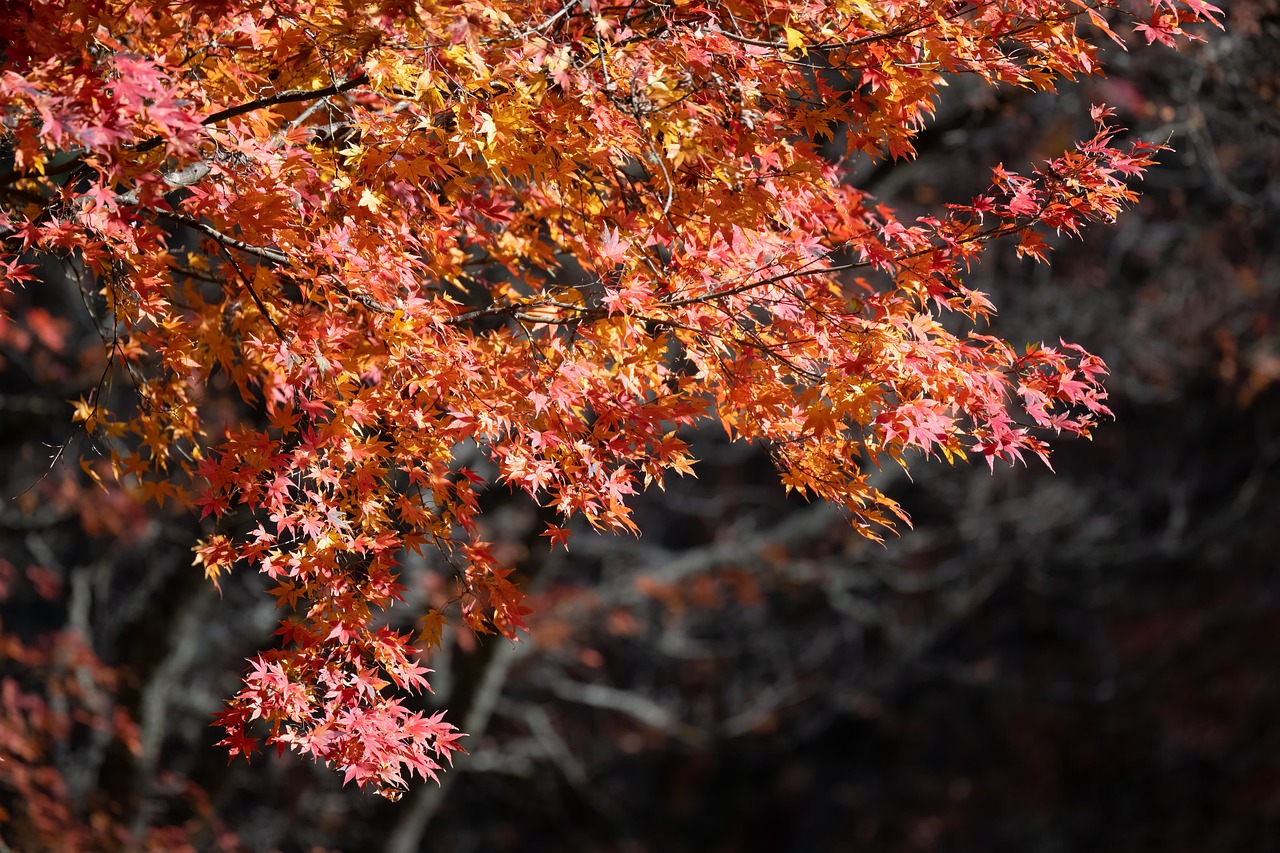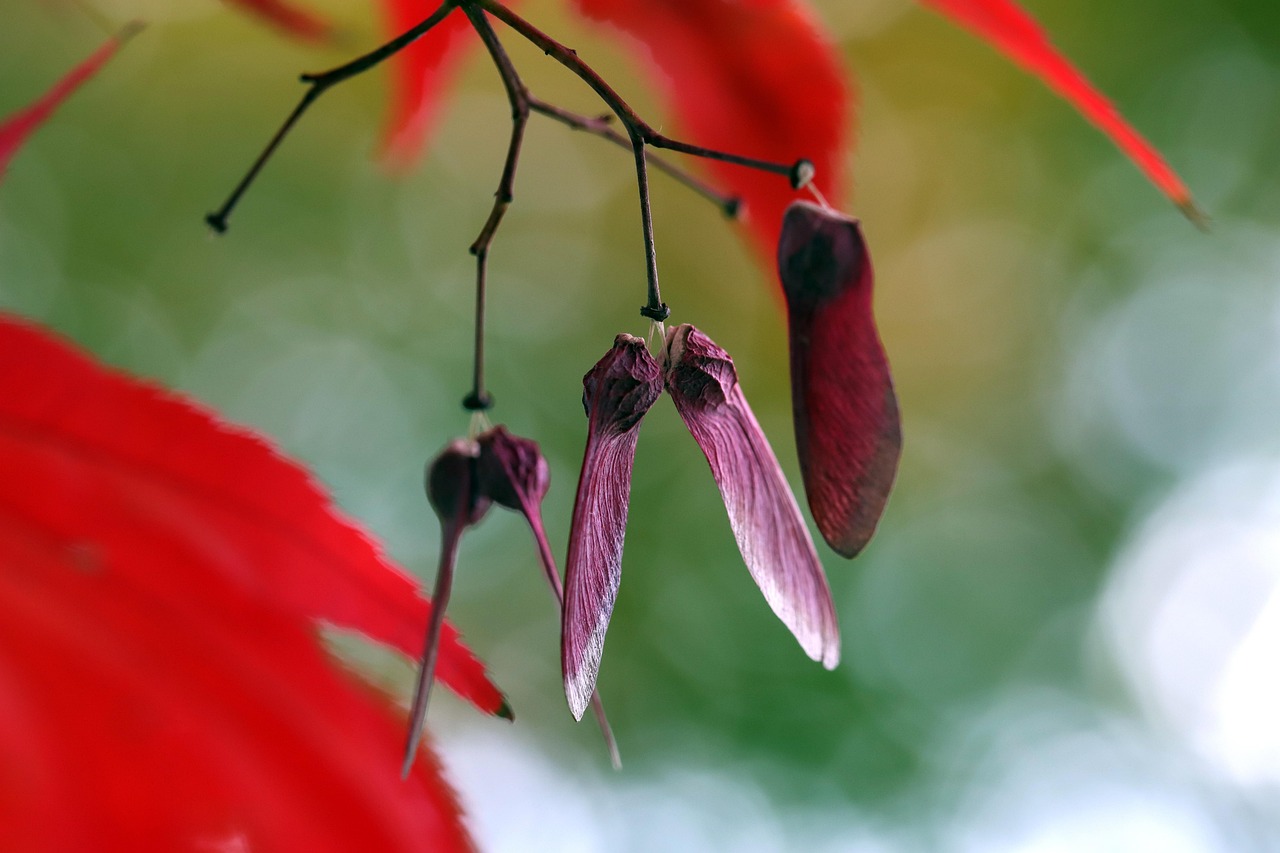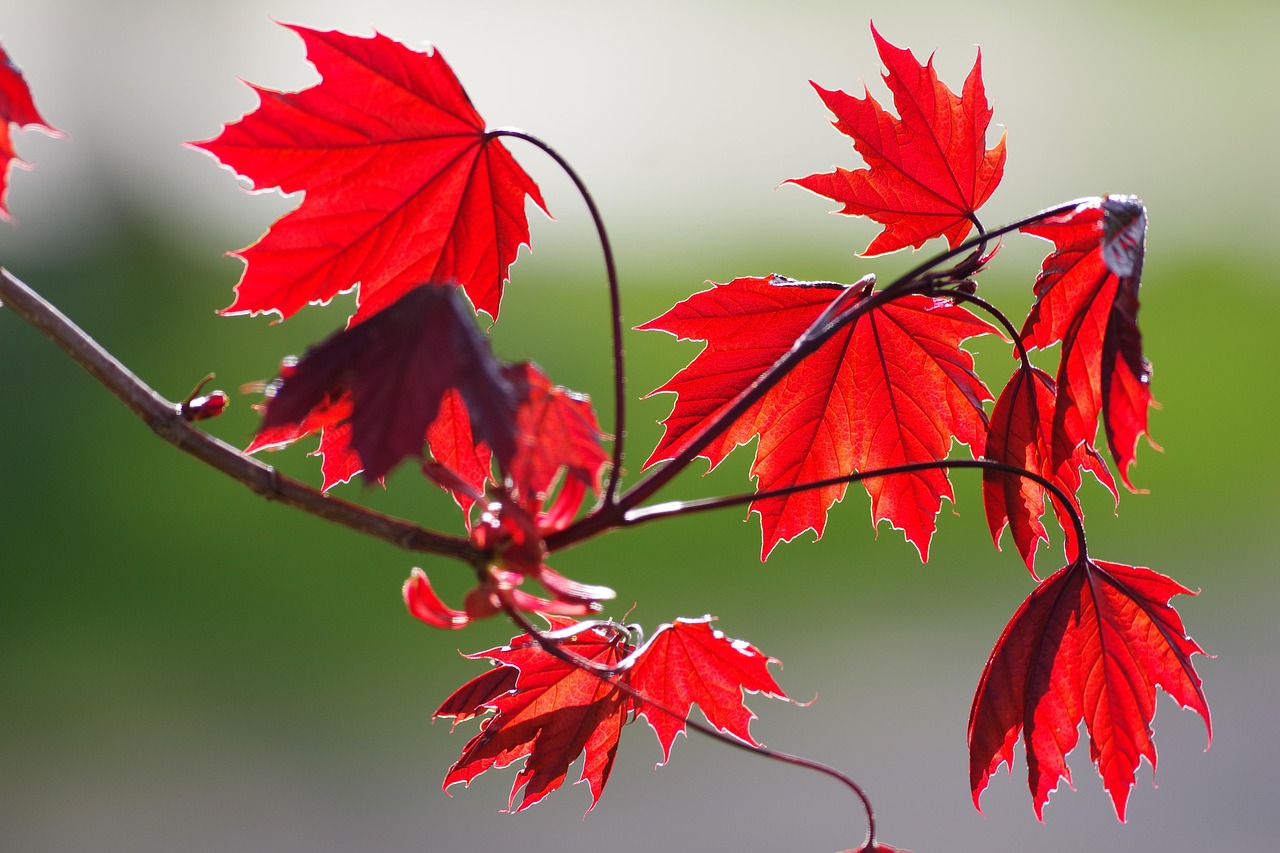Yes, red maple trees do lose their leaves in the fall. This process, known as abscission, occurs as the trees prepare for winter. During autumn, their foliage transforms into vibrant colors before ultimately dropping off.
Understanding Red Maple Trees

Red maple trees, scientifically known as Acer rubrum, are one of the most common tree species in North America. They are prized for their stunning fall colors and adaptability to various soil types and climates. These trees can thrive in wet or dry conditions, making them a favorite among homeowners and landscapers alike.
The red maple is characterized by its distinct lobed leaves that change from green to bright shades of red, orange, and yellow in the fall. This seasonal transformation not only beautifies landscapes but also signifies important ecological changes as the trees prepare for winter dormancy.
Life Cycle and Seasonal Changes
The life cycle of a red maple tree is heavily influenced by the changing seasons. Each season presents unique challenges and adaptations for the tree. Understanding these seasonal changes is crucial for appreciating how and why red maples lose their leaves.
Spring
In spring, red maples begin to awaken from their winter dormancy. As temperatures rise and days lengthen, the trees start to produce new leaves and flowers. The budding foliage is typically a bright green, which provides a contrast to the still-barren landscape of early spring.
Summer
During summer, red maples are in full leaf. They actively photosynthesize, converting sunlight into energy and growing rapidly. This is also when they produce seeds in small clusters known as samaras, which can be dispersed by the wind. The lush canopy provides shade and habitats for various wildlife.
Autumn
As autumn approaches, the days become shorter and temperatures begin to drop. This seasonal shift triggers the process of leaf color change in red maples. The green chlorophyll breaks down, revealing pigments such as carotenoids and anthocyanins, which give leaves their beautiful red and yellow hues.
During this time, the tree prepares for winter by cutting off water and nutrient supply to the leaves. This process leads to leaf drop or abscission. Abscission serves an essential purpose: it helps the tree conserve water and energy during the harsh winter months when resources are scarce.
Why Do Trees Lose Their Leaves?
The primary reason trees like the red maple lose their leaves is to survive cold temperatures and reduced sunlight during winter. Losing leaves minimizes water loss through transpiration, which is crucial since water availability can be limited in frozen ground.
Key Factors Influencing Leaf Drop
- Temperature: Cold temperatures trigger physiological changes within the tree.
- Daylight: Shorter days signal the onset of dormancy.
- Soil Moisture: Changes in soil moisture levels can affect leaf retention.
The Abscission Process
The abscission process involves several stages. Initially, cells at the base of each leaf stem begin to break down. A specialized layer of cells, known as the abscission zone, forms at this junction. As this layer develops, it cuts off the transport of nutrients and water to the leaf.
Eventually, this leads to a complete detachment of the leaf from the tree. Wind or rain can help facilitate this process by knocking off the already weakened leaves.
Benefits of Leaf Drop
Leaf drop has several benefits for red maple trees:
- Water Conservation: Reducing leaf surface area helps retain moisture.
- Nutrient Recycling: Fallen leaves decompose and enrich the soil with nutrients for future growth.
- Pest Control: Shedding leaves helps reduce pest infestations during winter.
Conclusion of Seasonality
The seasonal changes experienced by red maple trees are an essential aspect of their life cycle. Understanding how these trees lose their leaves not only enhances our appreciation for them but also underscores their adaptability to changing environments.
| Season | Key Activity | Tree Adaptation |
|---|---|---|
| Spring | Budding and Growth | Photosynthesis begins anew |
| Summer | Full Leaf Growth | Maximizes energy production |
| Autumn | Color Change and Leaf Drop | Prepares for winter dormancy |
| Winter | Dormancy | Conserves energy and resources |
Climate Influence on Leaf Drop
The climate plays a significant role in determining when and how red maple trees lose their leaves. Various weather conditions, such as temperature changes, rainfall, and sunlight exposure, directly impact the timing of leaf abscission.
Temperature Changes
Temperature fluctuations are one of the primary triggers for leaf drop. As autumn progresses, cooler temperatures signal the tree to prepare for winter. The process of leaf color change and eventual drop is most pronounced when nights become cooler than days. This temperature contrast is essential for the production of pigments that create the vibrant fall colors.
Rainfall and Soil Moisture
Rainfall patterns also influence the health and vitality of red maple trees leading up to leaf drop. Adequate soil moisture during the growing season promotes healthy leaf development. Conversely, prolonged dry periods can stress the tree, causing it to shed leaves earlier than usual to conserve water.
Impact of Drought
Drought conditions can significantly affect leaf retention. When water is scarce, red maples will prioritize their survival by dropping leaves to reduce transpiration. This response allows them to conserve vital resources until conditions improve.
Sunlight Exposure
The amount of sunlight that red maple trees receive can also impact their leaf drop. Trees that are shaded by surrounding vegetation may experience delayed leaf color changes and abscission. In contrast, those exposed to full sunlight often exhibit brighter colors and a more synchronized leaf drop.
Factors Affecting Leaf Color Change
The stunning colors of red maple leaves in the fall are influenced by several factors, including genetics, environmental conditions, and physiological processes within the tree.
Genetic Factors
Different varieties of red maple trees can exhibit various color changes in autumn. Some cultivars may display more vivid reds, while others may turn yellow or orange. This genetic variability contributes to the diverse aesthetics of red maple trees across landscapes.
Environmental Stressors
Environmental stressors also play a crucial role in leaf coloration. Factors such as soil nutrient levels, water availability, and even air quality can affect how vibrant the colors become. For example, trees with access to sufficient nutrients typically display more intense colors compared to those in nutrient-poor soils.
Role of Anthocyanins
The bright reds that characterize many red maple leaves are primarily due to the presence of anthocyanins. These pigments are produced in response to environmental stressors such as drought or high light intensity. Interestingly, anthocyanins can protect leaves from UV damage and help mitigate water loss.
Physiological Changes
As the growing season ends, physiological changes occur within the tree that affect leaf color. The breakdown of chlorophyll allows other pigments to show through, resulting in the vivid hues associated with autumn. This process is not only beautiful but also a sign that the tree is preparing for winter.
Leaf Drop Variability Among Regions
The timing and process of leaf drop can vary significantly based on geographical location. Different regions experience varying climatic conditions, influencing when red maple trees lose their leaves.
Northern vs. Southern Regions
In northern regions with colder climates, red maples typically lose their leaves earlier in the fall. The combination of shorter growing seasons and more pronounced temperature drops accelerates the abscission process. Conversely, in southern regions where winters are milder, leaf drop may occur later, allowing for a longer display of fall colors.
Urban vs. Rural Environments
Urban environments can also affect leaf drop timing due to the urban heat island effect. Cities often retain heat longer than surrounding rural areas, which can delay the onset of dormancy for trees like red maples. As a result, urban red maples may exhibit prolonged periods of vibrant foliage compared to their rural counterparts.
Case Studies
| Region | Typical Leaf Drop Time | Color Variability |
|---|---|---|
| Northern States | Late September to Early October | Bright Red and Orange |
| Southern States | Mid to Late October | Yellow and Pale Orange |
| Urban Areas | Mid October to November | Vibrant Variability |
Understanding these regional differences helps in appreciating the beauty and adaptability of red maple trees across various environments. Each region’s unique climate contributes to the diverse display of colors seen each autumn.

Ecological Impact of Leaf Drop
The leaf drop of red maple trees is not just a survival mechanism; it plays a critical role in the surrounding ecosystem. The process of shedding leaves contributes to nutrient cycling, habitat creation, and overall ecosystem health.
Nutrient Cycling
When red maple trees drop their leaves in the autumn, a process begins that enriches the soil. As leaves decompose, they release essential nutrients back into the ground. This natural recycling process benefits various forms of life, from microorganisms to larger plants.
- Organic Matter: Fallen leaves add organic matter to the soil, improving its structure and fertility.
- Nutrient Enrichment: Decomposing leaves release nitrogen, phosphorus, and potassium, which are vital for plant growth.
- Soil Microorganisms: The decomposition process encourages a diverse range of soil microorganisms, which play a vital role in soil health.
Habitat Creation
Fallen leaves also provide an important habitat for various organisms. Many insects, fungi, and small animals rely on leaf litter for food and shelter. This habitat supports biodiversity within the ecosystem.
Benefits for Wildlife
The leaf litter created by red maple trees is particularly beneficial for:
- Insects: Insects such as beetles and ants thrive in leaf litter, contributing to the decomposition process.
- Small Mammals: Animals like rabbits and squirrels utilize leaf litter as nesting material and shelter from predators.
- Birds: Ground-nesting birds find cover in leaf litter, providing safety for their young.
Human Interaction with Red Maple Trees
Red maple trees have significant value for humans, not only for their beauty but also for their environmental contributions. Understanding how to interact with and care for these trees can enhance both personal enjoyment and ecological health.
Cultivation and Landscaping
Red maples are popular choices for landscaping due to their adaptability and stunning fall colors. They can thrive in various soil types and conditions, making them an excellent option for urban and suburban environments.
Planting Tips
If you are considering planting a red maple tree, here are some essential tips:
- Choose the Right Location: Select a site with adequate sunlight and space for growth.
- Soil Conditions: Ensure well-drained soil that retains some moisture.
- Watering: Water the tree regularly during its first few years to help establish a strong root system.
- Mulching: Apply mulch around the base to retain moisture and suppress weeds.
Maintenance Practices
Caring for red maple trees involves regular maintenance to promote health and longevity. Here are some practices to consider:
- Pruning: Regularly prune dead or diseased branches to encourage healthy growth.
- Pest Management: Monitor for common pests such as aphids or borers. Use organic or chemical treatments as necessary.
- Fertilization: Apply a balanced fertilizer in early spring to support growth during the growing season.
Red Maple Trees in Cultural Context
<

p>The red maple tree also holds cultural significance in various communities. Its striking appearance and resilience have led to its incorporation into art, literature, and even state symbols.
Cultural Symbolism
In many cultures, red maples symbolize strength and endurance. Their ability to thrive in diverse environments makes them a metaphor for resilience.
- State Tree: The red maple is recognized as the state tree of several U.S. states, including New York and Wisconsin.
- Artistic Representation: The vibrant fall colors of red maples have inspired countless artists and photographers who seek to capture their beauty.
- Cultural Traditions: In some regions, festivals celebrate the changing colors of the trees, attracting visitors who appreciate the natural beauty.
Environmental Education
Red maples serve as an excellent educational tool for teaching about ecology, biology, and environmental stewardship. Schools and nature centers often use these trees in programs aimed at fostering a connection with nature.
Through hands-on activities such as leaf collection and observation, students can learn about photosynthesis, seasonal changes, and biodiversity. This interaction fosters a greater appreciation for the natural world and encourages conservation efforts.
The Future of Red Maple Trees
The future of red maple trees is intertwined with broader environmental changes. As climate change continues to impact weather patterns and ecosystems, understanding how these trees adapt will be crucial for their survival.
Climate Resilience
Research is ongoing to determine how red maples may adapt to changing temperatures and precipitation patterns. Some studies suggest that these trees may migrate northward as conditions become less favorable in their traditional ranges.
Conservation Efforts
Conservation efforts are essential to protect existing populations of red maples. Initiatives may include reforestation projects, habitat protection, and public education to promote awareness about the importance of preserving these iconic trees.
The adaptability of red maples combined with focused conservation efforts may help ensure their continued presence in our landscapes for generations to come. As we learn more about these vital trees, we can better appreciate their role in our ecosystems and our lives.
Importance of Red Maple Trees in Ecosystems
Red maple trees are not only beautiful but also play a crucial role in their ecosystems. Their presence supports various forms of wildlife and contributes to overall environmental health. Understanding their ecological importance sheds light on why we must protect and preserve them.
Support for Biodiversity
As keystone species, red maples contribute significantly to biodiversity. They provide habitat and food for numerous organisms, including:
- Birds: Many bird species nest in red maple trees, utilizing the dense foliage for shelter and protection from predators. Additionally, their seeds offer a food source.
- Mammals: Small mammals such as squirrels and raccoons rely on red maples for both food and nesting sites. The tree’s acorns and seeds are vital energy sources.
- Insects: A wide variety of insects thrive on red maple trees, including pollinators like bees and butterflies. These insects play essential roles in pollination and maintaining healthy ecosystems.
Water Management
Red maple trees also play a critical role in water management within their ecosystems. Their extensive root systems help regulate groundwater levels and prevent soil erosion. By absorbing rainwater, they reduce runoff and contribute to maintaining water quality in surrounding areas.
Flood Mitigation
During heavy rainfall, the ability of red maples to absorb excess water helps mitigate flooding. This natural flood control is vital for protecting nearby habitats and human settlements.
Cultural Significance of Red Maple Trees
<

p>Beyond their ecological benefits, red maple trees hold cultural significance across various communities. Their striking appearance and resilience have led to their representation in art, folklore, and regional identity.
Artistic Inspiration
The vibrant fall colors of red maple trees inspire countless artists, photographers, and poets. Their seasonal transformations are often depicted in paintings, literature, and photography, celebrating the beauty of nature.
Folklore and Traditions
In some cultures, red maples are associated with strength, endurance, and longevity. Various traditions celebrate the changing colors of these trees, fostering community gatherings and appreciation for the natural world.
Festivals
Many regions host fall festivals centered around the beauty of red maple trees. These events often include activities such as leaf-peeping tours, local crafts, and educational seminars about forest conservation.
Conservation Initiatives
With the challenges posed by climate change and urban development, conservation initiatives focused on red maple trees are more important than ever. Collaborative efforts can help safeguard these trees for future generations.
Community Involvement
Local communities can engage in various conservation efforts to protect red maples. Some strategies include:
- Tree Planting Programs: Organizing community tree planting events can help restore lost habitats and improve local biodiversity.
- Educational Workshops: Offering workshops on the importance of red maples can raise awareness and foster appreciation within the community.
- Monitoring Programs: Engaging citizens in monitoring the health of local red maple populations can contribute valuable data for research and conservation planning.
Government Policies
Government bodies at local, state, and national levels can implement policies that support the protection of red maple trees. Legislation aimed at preserving natural habitats and promoting sustainable land use will ensure that these trees continue to thrive.
Final Thoughts
Red maple trees are a remarkable species that contribute significantly to our ecosystems, provide aesthetic enjoyment, and hold cultural value across communities. Their seasonal changes not only mark the passage of time but also serve as a reminder of nature’s beauty and resilience.
The challenges posed by climate change necessitate a collective effort to protect these trees. By understanding their importance and engaging in conservation initiatives, we can help ensure that red maples continue to thrive in our landscapes. As we foster appreciation for these trees, we also promote a deeper connection with nature, inspiring future generations to value and protect our natural world.
The journey of the red maple from vibrant green leaves in spring to stunning reds and oranges in fall encapsulates the beauty of seasonal change. Embracing this cycle enhances our appreciation for the resilience of life and the interconnectedness of all living things.
As stewards of the environment, it is our responsibility to support initiatives that protect red maple trees and other vital species. Together, we can work towards a sustainable future where these magnificent trees continue to grace our landscapes for generations to come.
